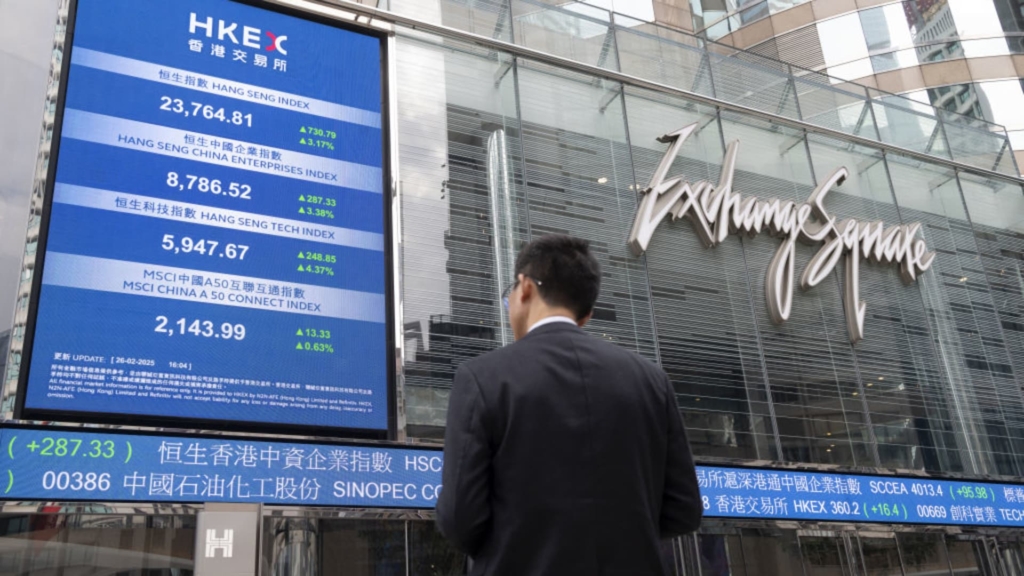BEIJING — Chinese firms are seizing a valuable opportunity to launch initial public offerings (IPOs) in Hong Kong as global investors begin to return, sparked by DeepSeek’s significant advancements in artificial intelligence announced at the end of January.
This surge in enthusiasm marks a notable change, as it has not been witnessed for over three years, even in the face of ongoing U.S.-China trade tensions. For early investors in startups, IPOs present an appealing exit strategy to realize their returns.
“Everyone is working seamlessly together. The IPO candidates, the investors, and the regulators are all aligned,” said George Chan, global IPO leader at EY. “The synergy among these three groups is crucial in fostering a robust IPO market in Hong Kong right now.”
Chan also mentioned, “Long-term funds from the U.S. have resumed their investments, which reflects growing confidence in the Chinese market,” remarking that the performance of newly listed companies post-IPO has been promising.
On March 3, leading Chinese bubble tea franchise Mixue made its debut on the Hong Kong Stock Exchange with an oversubscribed listing. Additionally, battery manufacturer Contemporary Amperex Technology (CATL) has filed for what could potentially be the largest IPO in Hong Kong since 2021, when Kuaishou, a short-video platform, listed.
DeepSeek’s recent claims of developing AI capabilities that could rival ChatGPT—at a lower cost and notwithstanding U.S. restrictions on advanced chip access—prompted a resurgence in global tech stocks, particularly in China, where Hong Kong’s Hang Seng index reached its highest point in three years.
In February, Chinese President Xi Jinping convened a rare meeting with tech entrepreneurs, signaling heightened support for the private sector following a period of increased regulatory scrutiny.
During the first quarter, six IPOs in Hong Kong collectively raised over 1 billion Hong Kong dollars (approximately $130 million), a substantial increase from just one comparable listing in the same timeframe last year, according to KPMG.
In total, Hong Kong welcomed 15 IPOs in the first quarter which amassed 17.7 billion HKD, marking the most successful beginning to a year since 2021.
However, there is still a considerable distance to cover to return to pre-2021 levels. In that same quarter in 2021, Hong Kong saw 32 IPOs that raised an astonishing 132.7 billion HKD, as reported by KPMG.
Since then, the Hong Kong stock exchange has modified its listing rules, including provisions that enable companies already listed on the mainland to offer shares in Hong Kong.
In addition to CATL, companies like Hengrui Pharmaceuticals, Mabwell, Haitian Flavoring and Food, Fortior Tech, and Sanhua Intelligent Controls are actively pursuing listings in Hong Kong, according to Tiger Brokers, a key underwriter for IPOs in both the U.S. and Hong Kong.
Tiger Brokers noted, “Chinese regulators are encouraging companies to list in Hong Kong to expand financing avenues and support the overseas merger and acquisition aspirations of Chinese businesses.”
Still not out of the woods
The regulatory upheaval following Chinese ride-hailing service Didi’s controversial IPO in the U.S. during the summer of 2021 intensified scrutiny of Chinese companies seeking to list in New York.
Many of the critical issues have since been addressed, and Beijing has clarified its regulations regarding listings outside the mainland. Nevertheless, the previous U.S. administration suggested it might intensify scrutiny of U.S. investments flowing into China, alongside increased tariffs.
As of now, there has been no indication of when the leaders of the U.S. and China will convene to negotiate a new deal. The heightened interest in AI and technology alone has not sufficed to catalyze a quick recovery of China’s economic landscape.
“Currently, we can only observe positive indicators,” Chan remarked. However, he cautioned that “a single unexpected event could easily overturn the current trajectory.”
“Historically, trends tend to follow a pattern,” he added. “If the momentum sustains for three or four months, it could extend throughout the year.”


























